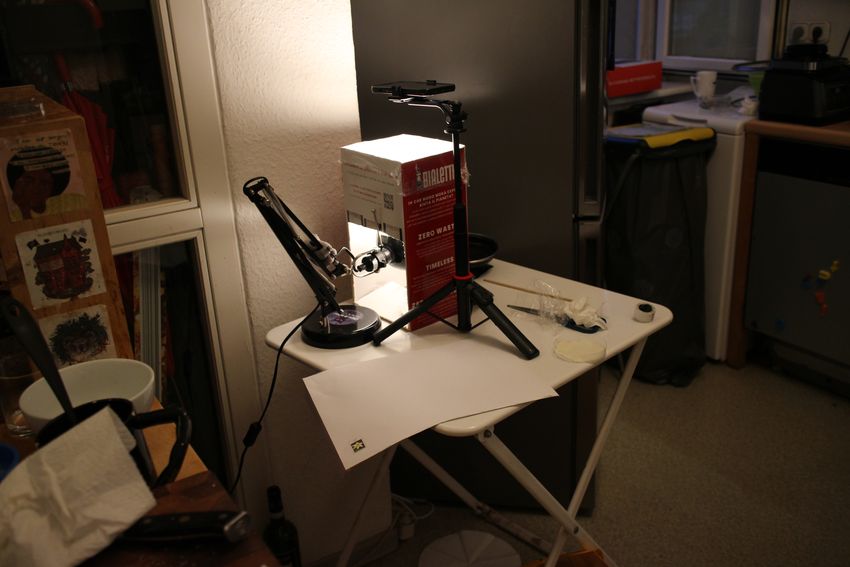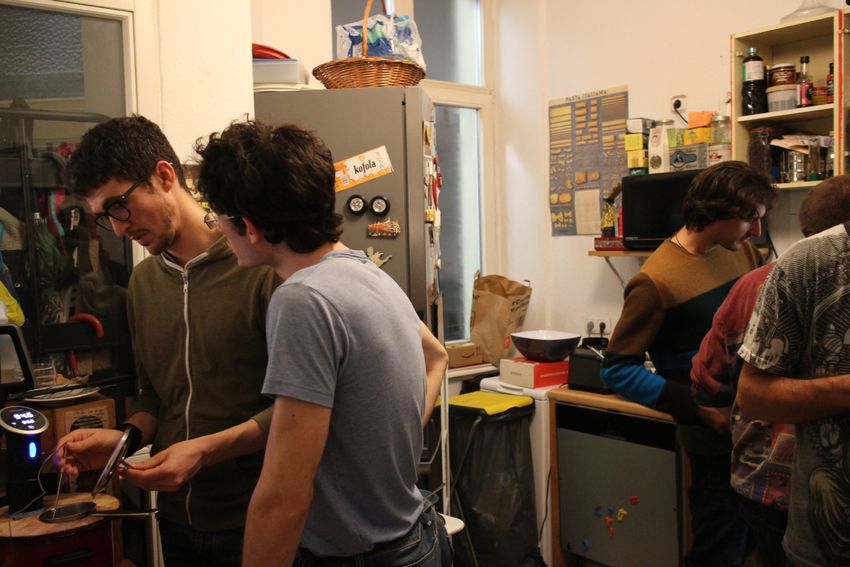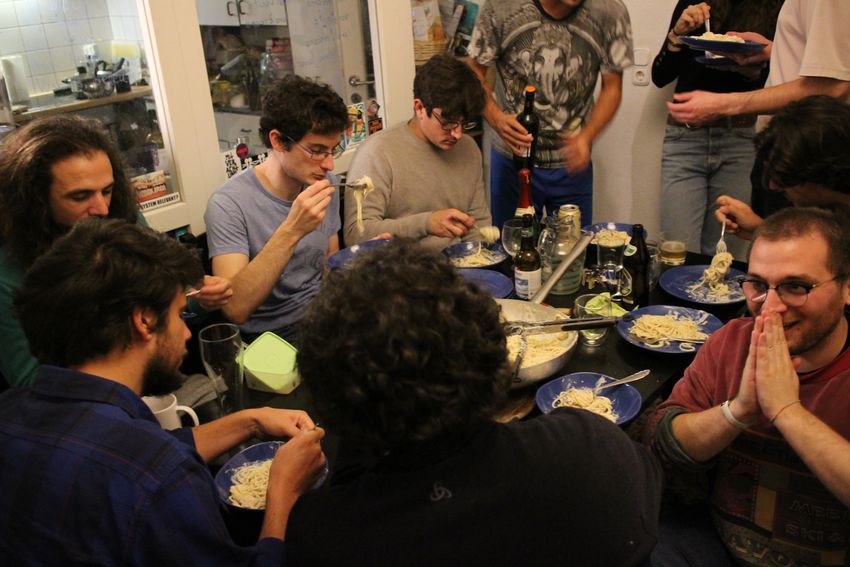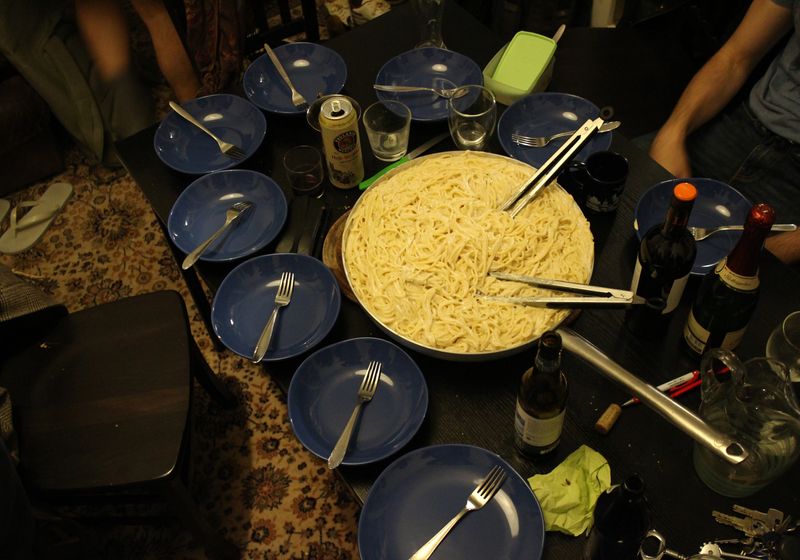Physicists determined the best and most consistent recipe for the cheesy and peppery Roman pasta dish cacio e pepe.
Image credit:Martina Gaiba
On September 18, 2025, the 35th First Annual Ig Nobel Prizes were announced, celebrating scientific achievements that “first make people laugh, and then make them think.” The ten prizes awarded this year fit the theme “Digestion” with awards honoring lizards’ pizza preferences to how biting flies avoid feeding from cows painted with black and white stripes.1,2
This year’s Ig Nobel Physics Prize honored a delicious finding: the physics of the perfect cacio e pepe recipe—a deceptively difficult, traditional Roman pasta dish.3 “We feel great, really great,” said Ivan Di Terlizzi, a physics postdoctoral researcher at the Max Planck Institute who shares the award equally with seven of his colleagues. “This happened so fast, so I still have to process it…for sure, only positive emotions.”
Italian physicists presented their winning work on the perfect cacio e pepe sauce at the 2025 Ig Nobel Prize ceremony.
Mike Benveniste

The researchers fashioned a light box to image the protein aggregates that characterized the “Mozzarella Phase” of the sauce.
Martina Gaiba
Cacio e pepe requires just a few ingredients: pasta, water, pecorino cheese, and black pepper. The secret to creating a smooth, creamy sauce that evenly coats the pasta lies in emulsifying the cheese with the starchy water used to cook the pasta. The main difficulty comes in combining these ingredients at the right temperature. If the temperature is too high—for instance, too close to the temperature at which pasta cooks—the cheese will form solid, stringy clumps that resemble the texture of mozzarella cheese, what the researchers called the “Mozzarella Phase.”
“At the end of the day, your dish ends up having a layer of salty water with pasta floating in it with a mozzarella on top of it, which is not great,” said Di Terlizzi. “This is why when I saw it, I said this is phase separation.”
Di Terlizzi encountered this problem a lot. He liked to cook for big groups of friends, but avoiding this clump formation was a challenge when making cacio e pepe for a lot of people. He didn’t like to waste large amounts of good ingredients if the dish didn’t turn out well. So, he approached his friend and fellow physics colleague, Giacomo Bartolucci, who is now a biophysicist at the University of Barcelona, with an idea. During Bartolucci’s doctoral research, he studied mixtures of proteins and how they can form liquids and solid aggregates. Di Terlizzi reasoned that the same phase transitions were occurring in cacio e pepe, and he asked Bartoluccio to team up with him to study the physical properties of the sauce.

The study coauthors worked on weekends and bought all of their own supplies to perform their cacio e pepe phase separation experiments.
Martina Gaiba
“I looked at him, and I said, ‘Well Ivan, I really like spending time with you. I love how you cook, so we can do it,’” said Bartolucci. “We quickly assembled this team of Italian people that were kind of orbiting around Ivan’s place actually and were eating with us all the time, and then everything assembled.”
The team decided to spend the first weekend in October last year performing all of their experiments, and as many of them had recently moved to other institutions, they planned to write up their results remotely. But that didn’t go exactly as planned.
“We are all trained theoreticians, so we didn’t actually [do] hands on experiments often,” said Bartolucci. In the end, they used that weekend to figure out the conditions for each of the experiments they wanted to perform. The best part, Bartolucci added, was that they were among friends. “There was no professor involved, and just we wanted to come together and work on this. It was very, very smooth—as Ivan says—as the sauce should be.”
With the experimental parameters set, the team first assessed clump formation as a function of starch concentration in the pasta water, and they found that when starch concentrations in the pasta water were above one percent, clumps would not form even at high temperatures. If the starch concentration dipped below one percent, solid protein aggregates from the cheese appeared.
Bartolucci explained that as the temperature increases, the proteins in the cheese begin to denature, opening up their conformations and exposing their internal structures that like to stick together and form a network. “This is why when you cook an egg, you raise the temperature, these bonds form, and then you lower the temperature, but still the eggs remain solid,” he said. “Something similar happens [in cacio e pepe], and when these sticky residues are exposed, then you can get all sorts of clumps forming.”
In the end, the team determined the most consistent way to make a tasty bowl of cacio e pepe. They found that a two to three percent starch concentration worked best as did about 200 grams of cheese for 300 grams of pasta. The traditional way to get high concentrations of starch in pasta water would be to boil the pasta cooking water down to evaporate much of the water, but that approach can lead to variable results. Instead, the physicists recommended dissolving a set amount of potato or corn starch into water first for more consistent results.

The decision to study the physics properties of cacio e pepe came from the coauthors desire to make large batches of the pasta dish for their friends.
Martina Gaiba
“It’s non-traditional; this is true, but technically we are not adding any new ingredient,” said Di Terlizzi. “By the way, other chefs do it as well, so we were not the first one to invent this. We were just the ones that had the idea of giving a mathematical framework to this phenomenon.”
With their Ig Nobel in hand, the team is excited to celebrate their scientific achievement with their families and friends at the award ceremony in Boston. Seven out of the eight coauthors of the study, who all contributed equally to the research, will be in attendance.
“It has also been a great social experience because…everyone contributed in some way with ideas or support, consuming the samples,” said Di Terlizzi. Bartolucci added, “buying cheese.”
All of the hard work was worth it. “For somebody that values a lot curiosity and creativity, this is one of the highest recognitions,” said Bartolucci. “This is something that overcame all my expectations.”

